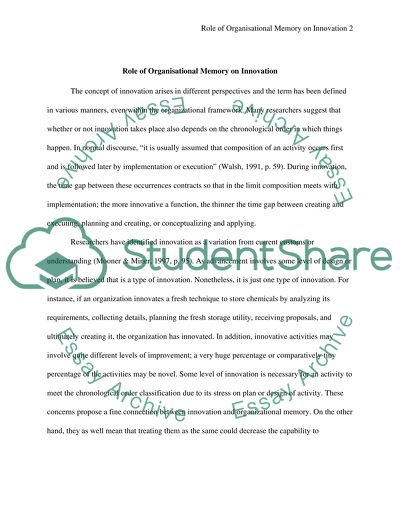Cite this document
(“A critical discussion of the role of organisational memory on Essay”, n.d.)
Retrieved de https://studentshare.org/miscellaneous/1610694-a-critical-discussion-of-the-role-of-organisational-memory-on-innovation
Retrieved de https://studentshare.org/miscellaneous/1610694-a-critical-discussion-of-the-role-of-organisational-memory-on-innovation
(A Critical Discussion of the Role of Organisational Memory on Essay)
https://studentshare.org/miscellaneous/1610694-a-critical-discussion-of-the-role-of-organisational-memory-on-innovation.
https://studentshare.org/miscellaneous/1610694-a-critical-discussion-of-the-role-of-organisational-memory-on-innovation.
“A Critical Discussion of the Role of Organisational Memory on Essay”, n.d. https://studentshare.org/miscellaneous/1610694-a-critical-discussion-of-the-role-of-organisational-memory-on-innovation.


